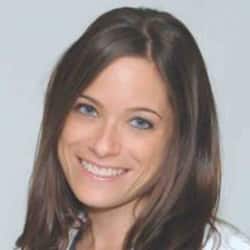Breast Density: The Bare Necessities

Breast density is a buzz word that seems to be all the rage these days. In 2009 it became a hot topic when the state of Connecticut became the first state to enact the breast density laws requiring women undergoing mammography to be informed of the risks posed by breast density. Since that time, 27 states have put these laws into effect.
But too often buzz words are thrown around without much clarification and create unwarranted panic. So…what does breast density actually mean for you?
First thing to know is that if you’ve been told that you have dense breast tissue, you are in good company. Approximately 40-50% of women in the U.S., aged 40-74, fall into that category.
The best way to understand breast density is to think about the makeup of the breast. Our breasts are composed of glandular tissue, fat and connective tissue. The glandular tissue responds to hormonal changes in your body and can be a source of soreness/pain during certain points of your menstrual cycle. The connective tissue is what holds it all together, serving as your best defense against sagging due to gravity. The fat present in breasts…is.fat. Sorry ladies, no better way to say the F word. Each individual has a different ratio of these three types of tissue. So, having dense breasts means that there is more glandular and connective tissue relative to fat.
Having high mammographic density (i.e. dense breasts) can mean two things. First, it limits the ability of the mammogram to detect cancer, called the masking effect. My favorite way to explain the limits of a mammogram is to think about pantyhose. Portions of the breast tissue are like sheer pantyhose, completely ‘see through’, making it easy to spot a change. Other portions are more akin to opaque tights, making it hard to discern an abnormality as it ‘blends in’. All breast tissue falls along the spectrum between pantyhose to opaque tights. Breast cancer presents with an opaque appearance allowing it to blend in the surrounding opaque (dense) tissue, making breast cancer detection harder.
The second issue is that dense breast tissue itself serves as an independent risk factor for breast cancer. Several scientific studies reveal differences in cellular/tissue responses to hormones and growth factors, among other etiologies. There is continued research in this area trying to better understand the relationship.
Is there anything you can do to change your density?
Dense breast tissue is multifactorial. There are intrinsic factors contributing to breast density namely age, genetics, hormone levels, and body mass index (BMI). External factors believed to affect breast density are hormone supplements/replacement, diet, exercise, alcohol, and environmental factors. Studies over the years have demonstrated that changes in diet and alcohol consumption result in decreased cancer risk but direct connection to the dense tissue has not been clearly demonstrated, suggesting a separate protective mechanism of action.
So what are your options?
The recommended solution is the addition of a breast sonogram to your annual screening regiment. A sonogram uses sound waves to travel through the breast tissue and unlike a mammogram it is not limited by breast density. There is no radiation, it is essentially pain free and serves as a useful tool if used in conjunction with a mammogram.
A second option is a breast MRI but this method is usually reserved for women that have a specific elevated risk of breast cancer above that of the average population and are usually evaluated on a case by case basis.
So given the limits of mammograms, why not abandon them completely?
It’s important to understand that a mammogram remains the gold standard for a reason. They are the only proven method to decrease mortality from breast cancer. In addition, one of the earliest signs of breast cancer are microcalcifications and these can only be seen on a mammogram.
In conclusion, knowing what dense breast tissue means can help women understand and take advantage of the variety of screening methods available. Knowledge is protection. Make dense sense?
